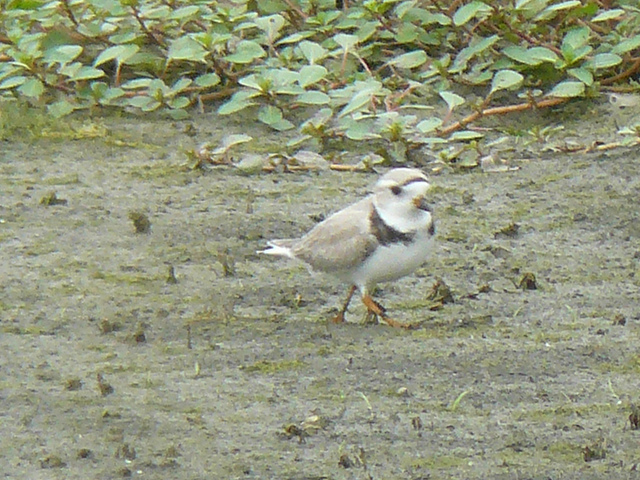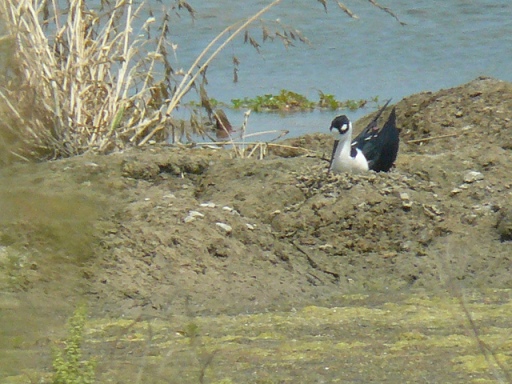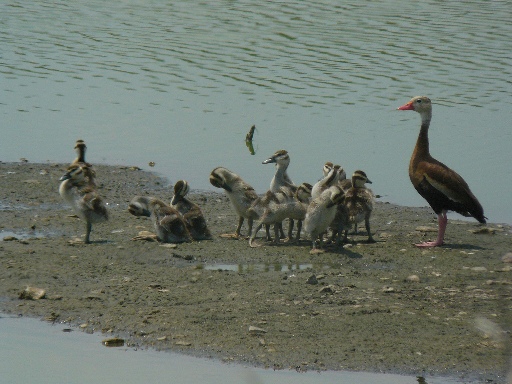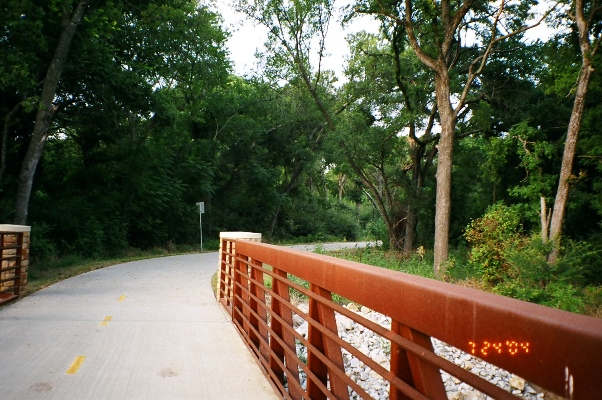
The Most Unlikely Birding Site In Texas
Birders are always trading notes about great spots to pursue
their passion. Some of these are tranquil lakes; some wave-washed
beaches; some windswept prairies; some leafy woodlands. All of them
lovely and sweet-smelling, picture-pretty wild places.
But one of the most vaunted birding sites in north Texas is an
abandoned sewage plant drying bed. And a rather malodorous one at that.
The birding there can be so spectacular as to get hard-core birders
virtually babbling to each other. I know; I’ve been there many times.
And babbled. Ducks in winter, migrating shorebirds, raptors and
passerines in spring and fall, and rare water birds in summer, all in
the heart of the Dallas-Fort Worth Metroplex, next to a busy six-lane
street.
Less than a mile northeast of Fort Worth’s sprawling Village
Creek Wastewater Treatment Plant alongside Green Oaks Boulevard lie
acres of former sludge drying beds. From 1970-1995, the drying beds were
the final dewatering step in waste solids processing. Each summer the
biosolids were removed from the beds and beneficially recycled as a
fertilizer and soil conditioner on area parks, golf courses, highway
easements and farmlands.
But in April, 1995, Village Creek ceased pumping sludge to the
drying beds. The sludge that remained in the drying beds and adjacent
stockpiles was removed under a series of contracts from 1996-2001. The
drying bed site is now maintained and available as an emergency backup
for sludge storage, as outlined in the City's master plan. And it has
been opened, on a limited basis, to the birdwatching public.
Because a unique feature of the Village Creek sludge drying
beds is an incredible abundance of birds and other animals, attracted to
the area over the years by the nutrient-filled water teeming with
organic life. Due to the availability of water and the sheltered
structure of the site, the area is also a resting stop for hundreds of
migratory birds on the Central Flyway of the United States.
The 240-acre site includes 45 two-acre ponds surrounded by a
high levee (to keep out floodwaters from the adjacent Trinity River),
plus some swampy woodland and damp meadows just outside the levee. The
beds are immediately adjacent to, and bordered on three sides by,
Arlington’s 1,000-acres-plus River Legacy Parks greenbelt area. Most of
the park area is dense riparian woodland dotted with small meadows. Not
far away is a chain of shallow lakes left from decades of sand and
gravel extraction. Miles of paved and unpaved hiking and biking trails
run the length of the parklands, providing access to a seemingly endless
succession of other excellent birding areas along the river banks. But
the drying beds are the crown jewel because of the exceedingly rich
variety of birdlife to be seen there.
Just a Few of the Unusual Species You May See
Black-bellied Whistling Tree Duck – remarkably colorful and
rare hole-nesting duck usually seen only in areas close to Mexico, but
often numerous here.
Black-bellied Whistling Tree Duck
Ibis – very Egyptian-looking wading bird with a down-curved beak. Both the white and glossy versions are seen here.
Piping Plover – pale shorebird with a distinctive black-ringed
neck, these run along the pool edges, looking for food on the damp mud.

|
Piping Plover |
Roseate Spoonbill – spectacularly beautiful bright pink wading
birds with a unique flattened bill used for filtering tiny food animals
from muddy water. These drying beds in Arlington must be about the only
place in north Texas where these birds have been regularly sighted.
Black Tern – rare and declining species of graceful bird that
dives from the air to grab fish from the water. Freshwater marshes such
as these are critical to their continuing survival.
Black-necked Stilt – very slender-beaked wading bird with
incredibly long and delicate legs, these feed in shallow ponds and
flooded fields, stepping gingerly along as they probe for prey.

|
Black-necked Stilt |
Peregrine Falcon – associated with city skyscrapers and rocky
cliffs, these handsome raptors also fancy open woodlands such as the
park adjacent to the drying beds and are often seen there, attracted by
the plentiful prey of small birds and animals so numerous in the area.
Prothonotary Warbler – a marvelously bright yellow and orange
migratory warbler named because its plumage supposedly reminded early
Spanish explorers of the garb worn by medieval ecclesiastical court
clerks. Loves swamps and shallow waterways.
Yellow-headed Blackbird – a primarily western United States
relative of the familiar Red-winged Blackbird, this species is rarely
seen in Texas east of the trans-Pecos area, but has been spotted at the
drying beds.
Least Bittern – secretive and retiring wading bird that is
especially attracted to the interior of cattail marshes, creeping among
the stems and elevating its neck to blend into the background of reeds
when threatened.
How to Get There:
From the Fielder Road exit on IH 30 in Arlington, go north on
Fielder for 1.3 miles to Green Oaks Blvd. Turn right on Green Oaks and
go 0.3 miles to the entrance on the left – double iron swinging gates
between brick pillars. Gates open to public 7:30-4:00 most days. Follow
the long entrance drive past a marsh on the left and over the boundary
levee to a central parking area from which gravel drives radiate. DO NOT
drive beyond barricades, though the entire area is accessible on foot.
Not open during inclement weather and usually closed for a short time
after rains to allow the roads to dry out. Closed by 4:30. Do not
overstay or you will spend the night (or have to abandon your car and
walk out). There are no shelters, drinking water, or restrooms, so come
prepared in more than one sense. Bring binoculars or other optical aids,
birding manuals, and a sense of wonder. You will likely not be
disappointed.
And after the gates close, be sure to stop by River Legacy Parks next
door for more great birding. (See photo bottom of page.) Among the many
species sighted in this vast and semi-wild park by avid local birders,
it’s said even wood storks have been seen. Owls and woodpeckers are
commonplace. As a bonus, you may see one of the park’s resident bobcats.
And alligators in the Trinity are not unheard-of, a twelve-footer
having been reported nearby a few years ago.
Happy birding!
Click on author's byline for bio and list of other works published by
Pencil Stubs Online.
Photo below shows a tiny portion of the main trail through River Legacy Parks.










No comments:
Post a Comment